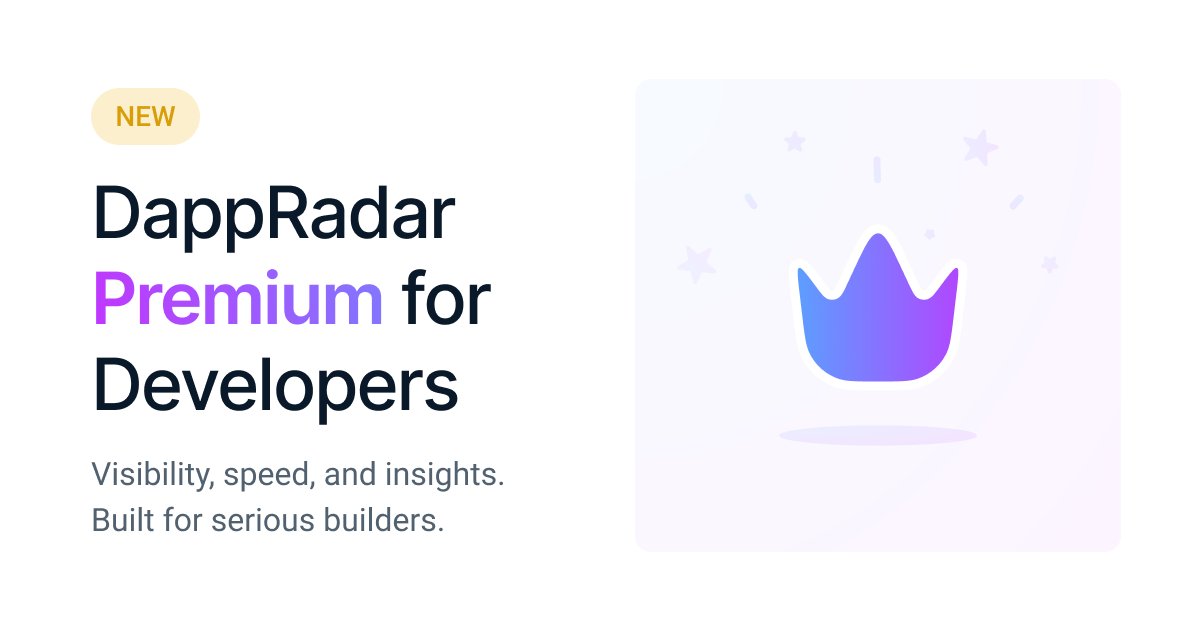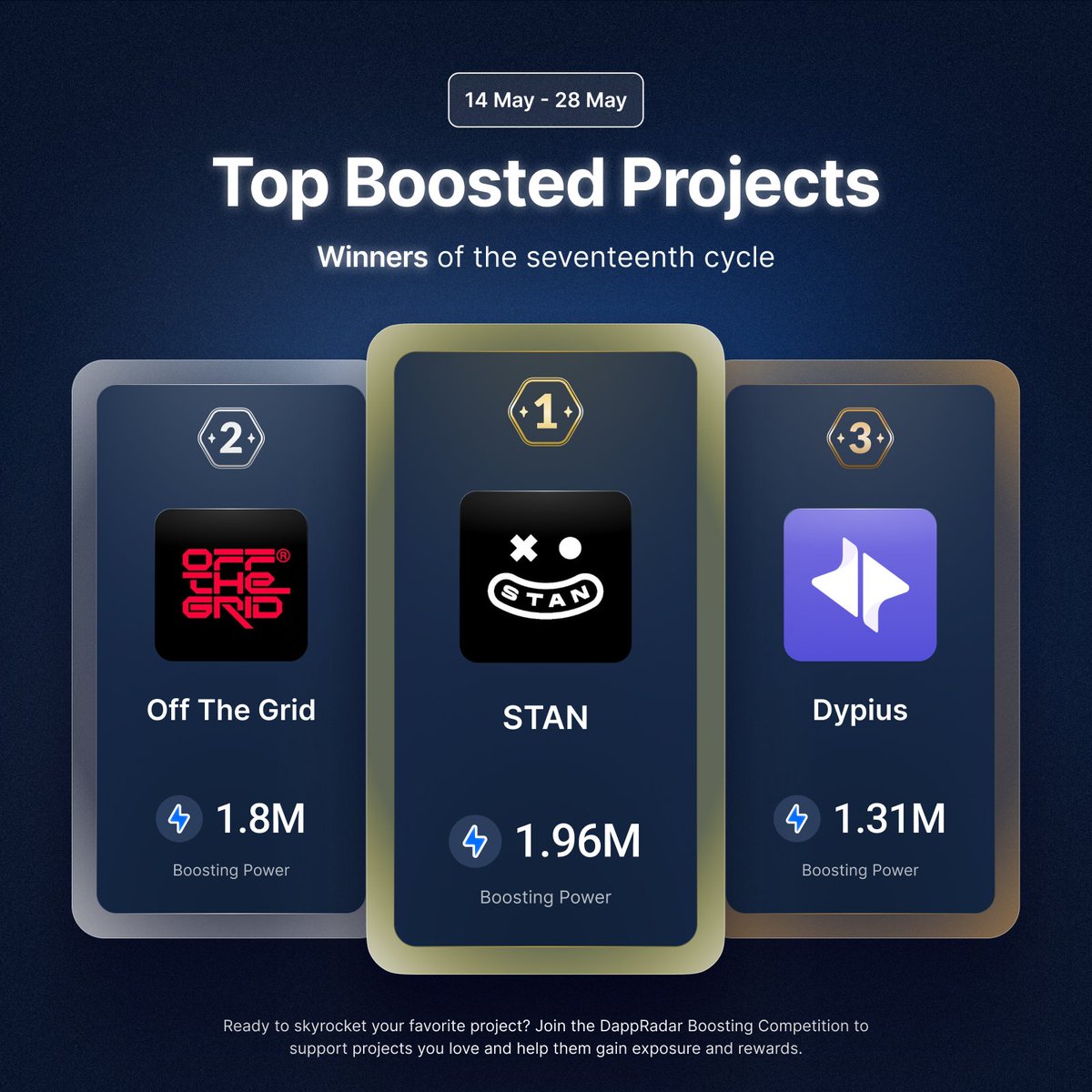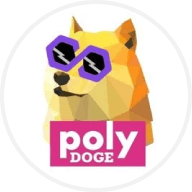Das Aufkommen von Ethereum revolutionierte den Kryptomarkt und ebnete den Weg für die Entwicklung dezentraler Anwendungen (dApps). DappRadar (RADAR) ist eine Plattform, die wertvolle Einblicke in die Welt der dApps bietet. Durch die Bereitstellung umfassender Daten und Analysen möchte DappRadar die Transparenz erhöhen und Benutzern die Navigation in der sich schnell entwickelnden Landschaft dezentraler Anwendungen erleichtern.
Was ist DappRadar?
DappRadar ist eine Blockchain-basierte Plattform, die genaue und aktuelle dApp-Marktdaten und -Statistiken bietet. Mit der Mission, irreführende Informationen zu bekämpfen, bietet DappRadar Benutzern eine zuverlässige und umfassende Website zur Marktdatenaggregation.
Auf DappRadar bereitgestellte DApp-Daten werden je nach Art und Art der dApp in Rankings und Portfolios dargestellt. Die Plattform bietet auch Informationen über nicht fungible Token (NFTs) und den größeren dezentralen Finanzmarkt (DeFi).
Das DappRadar-Team
DappRadar wurde von Skirmantas Januśkas und Dragos Dunica gegründet, die beide als CEO bzw. CDO fungieren. Das Blockchain-basierte Projekt hat auch den erfahrenen Krypto- und Blockchain-Experten Patrick Barile (COO) als Teil des Gründungsteams. DappRadar wird von einigen der führenden Risikokapitalunternehmen der Branche unterstützt, darunter Blockchain Ventures, Nordic Ninja und Prosus Ventures.
Wie funktioniert DappRadar?
DappRadar verfügt über eine benutzerfreundliche Website, die sowohl einfach zu navigieren als auch völlig kostenlos zu nutzen ist. Seine Zugänglichkeit hat es zu einem unverzichtbaren Werkzeug für Händler gemacht, die tiefere Einblicke in den aufstrebenden dApp-Markt gewinnen möchten. Mit ihrer globalen Ausrichtung und dezentralen Natur bietet die DappRadar-App ihren Nutzern zahlreiche Vorteile.
Eine der Hauptstärken von DappRadar ist seine Flexibilität. Benutzer haben die Möglichkeit, über 3.000 dApps in einer Vielzahl von Blockchains mühelos und sicher zu verfolgen. Darüber hinaus bietet die Plattform eine Portfolio-Tracking-Funktion, mit der Benutzer ihre täglichen Gewinne und Verluste überwachen und einen allgemeinen Überblick über ihre Bestände erhalten können.
Das native Token von DappRadar: RADAR
RADAR wurde 2021 eingeführt und ist der native Token des Projekts. Es wurde entwickelt, um Benutzern Zugriff auf alle aufregenden Funktionen der Plattform zu gewähren. RADAR dient auch als Belohnungs-Token, das anteilig unter den Community-Mitgliedern für ihren Beitrag zum Wachstum der Plattform geteilt wird.
Darüber hinaus ist RADAR die Grundlage für das DappRadar-Ökosystem der dezentralen autonomen Organisation (DAO) und fungiert als Governance-Token.
RADAR-Tokenomics
Das Gesamtangebot an RADAR-Tokens beträgt 10 Milliarden und entspricht dem ERC-20-Standard auf der Ethereum-Blockchain. RADAR zielt darauf ab, das Engagement der Gemeinschaft zu fördern und Anreize für eine aktive Teilnahme zu bieten, um ein lebendiges und nachhaltiges Ökosystem für alle Beteiligten zu gewährleisten.
RADAR-Staking
Das Abstecken ist ein wichtiger Aspekt des DappRadar-Ökosystems. Es ermöglicht Token-Inhabern, bestimmte Belohnungen für die Sperrung von Geldern für einen bestimmten Zeitraum zu verdienen. Sie können RADAR entweder als reguläres Mitglied oder als PRO-Mitglied einsetzen, was bedeutet, dass Sie die Möglichkeit haben, mindestens 5.000 bzw. 30.000 RADAR zu investieren.
Besuchen Sie zunächst die DappRadar-Website. Gehen Sie zur Registerkarte „Einsatz“ und wählen Sie eine bevorzugte Mitgliedschaftsoption. Verbinden Sie Ihr Wallet mit dem Netzwerk, wählen Sie den zu setzenden RADAR-Betrag aus und schließen Sie den Vorgang ab. Sobald Sie fertig sind, können Sie als DappRadar-Mitglied Belohnungen verdienen.
RADAR-Anwendungsfälle
RADAR gewährt Inhabern Zugriff auf Plattformfunktionen, dient als Zahlungsmittel für Transaktionen, ermöglicht Entwicklern die Entwicklung von Apps und bietet Stimmrechte im Ökosystem.
RADAR-Verteilung
RADAR wird wie folgt verteilt:
- 40 Prozent wurden treuen Gemeindemitgliedern zugeteilt.
- 25,25 Prozent wurden für das DappRadar-Team und die Aktionäre reserviert.
- 24,75 Prozent gingen an die Kasse von DappRadar, die Entwicklungs-, Fundraising-, Partnerschafts- und Marketingausgaben abdeckt.
- 10 Prozent wurden während des ersten Luftabwurfs verteilt.
Die Zukunft von DappRadar
DappRadar ist bestrebt, die Nachhaltigkeit seiner Plattform sicherzustellen, indem es Entwicklern, Benutzern und Stakeholdern im aufstrebenden dApps-Markt kontinuierlich wertvolle und genaue Marktkennzahlen liefert. Durch die Bereitstellung detaillierter Einblicke, Diagramme, Statistiken und Daten möchte DappRadar eine zuverlässige und vertrauenswürdige Informationsquelle sein. Darüber hinaus ist die Plattform bestrebt, sich kontinuierlich an Markttrends anzupassen und ihre Dienstleistungen zu verbessern, um ihre Relevanz und ihren Nutzen langfristig sicherzustellen.




























Soziales